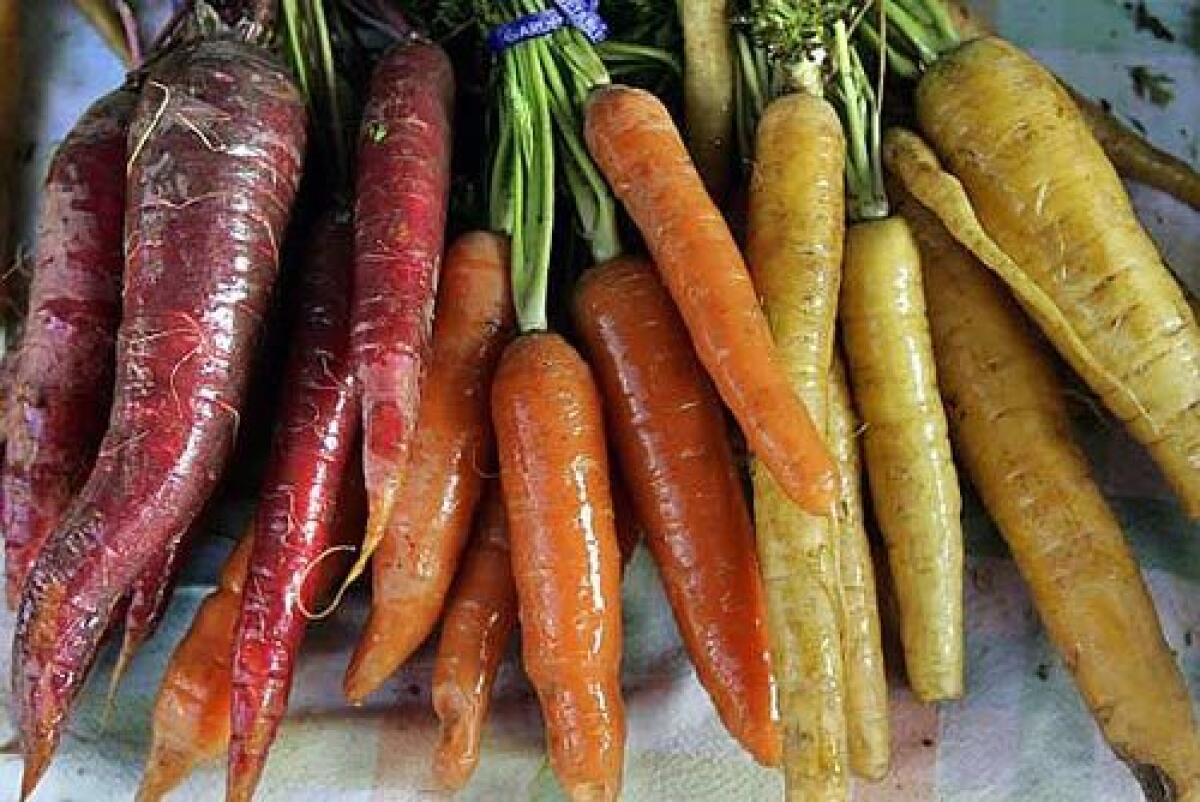Carrots: How to choose and store

- Share via
Remember when carrots were orange? Today, you can find them in a surprising assortment of colors: Royal Scarlets that are so red they’re almost purple; solar carrots that are a sunny yellow; lunar carrots that are pure white; and atomic carrots that are a candy-apple red. Even the old-fashioned orange carrot doesn’t have to be plain -- chubby, stubby Nantes carrots are sweet with a slim core.
Though once there was a craze for baby carrots, it seems like the bigger the better these days. There’s a reason for that: the longer a carrot is in the ground, the longer it has to develop sugar -- at least as long as the weather stays cool. When the weather warms, carrots begin to accumulate starch rather than sugar. There’s a downside to size as the tough, woody cores in mature carrots tend to get larger too. But these can be easily trimmed before cooking.
Choosing: It’s best to buy carrots with their tops on because the greens are delicate and will show their age much more quickly than the sturdy roots. Another trick is to judge by the intensity of the color of the peel. The pigments fade with time, so the deeper orange (or scarlet or yellow) a carrot is, the more likely that it’s fresh. Avoid vegetables with splits and cracks and those with lots of little hairy roots; they are too old.
Storing: Store carrots in a plastic bag in the refrigerator. Remove the tops if you’re not going to be eating them right away, as the greens will pull moisture from the roots.
More to Read
Sign up for The Wild
We’ll help you find the best places to hike, bike and run, as well as the perfect silent spots for meditation and yoga.
You may occasionally receive promotional content from the Los Angeles Times.







